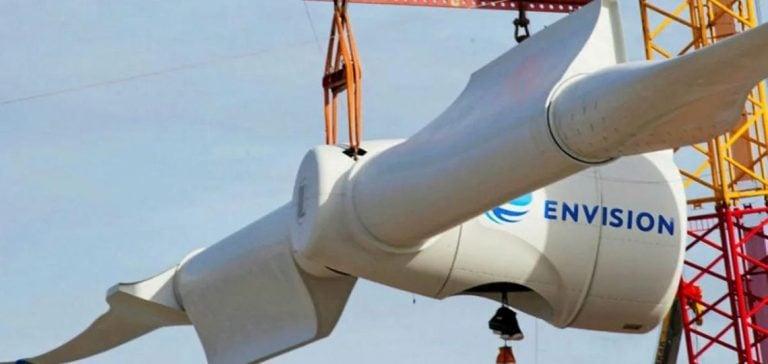The global wind turbine market is experiencing unprecedented momentum, with order volume reaching 91.2 gigawatts (GW) in the first half of the year, marking a 23% increase on the previous year.
This growth is the result of strong demand, particularly in China, where developers invested $42 billion, up 3% year-on-year.
Wood Mackenzie’s analysis highlights the disparities between the performance of wind turbine manufacturers in Asia-Pacific and that of their Western counterparts, who are struggling to adapt to a changing market.
Growing demand in Asia-Pacific
Most of this increase in orders came in the second quarter, when more than 66 GW were booked, mainly due to activity in northern China.
The country not only captured 70 GW of orders for its domestic market, but also managed to secure 5 GW of orders abroad.
Meanwhile, India posted significant progress, with orders up 69% on the previous year.
All in all, the Asia-Pacific region accounted for 85% of global intake in the first half of the year.
By contrast, Western wind turbine manufacturers are experiencing increasing difficulties.
Their share of global intake was just 13%, with orders outside China down 16%, or 2.3 GW.
The US and European markets recorded a 42% drop in orders, with less than 10 GW accumulated in the first half of the year.
This situation underlines the challenges facing Western OEMs, particularly in view of increased competition and more modest demand.
The challenges facing Western OEMs
Luke Lewandowski, Vice President of Renewable Energy Research at Wood Mackenzie, points out that “Chinese OEMs continue to break intake records, both domestically and internationally. By contrast, Western OEMs are struggling to keep pace, faced with China’s competitive advantages in price and availability. Weak demand in Western markets, together with political uncertainty, inflation and other cost pressures, have also contributed to the decline in business in the USA and Europe. China remains the undisputed industry leader.” While onshore order activity has increased, the offshore sector faces significant challenges.
Intake fell by 38% year-on-year, or 4.1 GW, due to difficult project economics holding back the market.
Despite this, the offshore market holds nearly 30 GW of conditional orders worldwide, including 21 GW for projects in Europe and the USA.
However, difficult economic conditions continue to delay the conversion of these orders into firm orders.
Market leaders
For the first half of the year, Envision topped the order book, followed by Windey and Goldwind, all of which recorded more than 12 GW of business.
This dynamic highlights the ability of companies to adapt to market demands and take advantage of opportunities, particularly in Asia-Pacific.
The companies that successfully navigate this complex competitive landscape are those that can innovate and respond to specific customer needs.
Analysis of wind turbine market trends reveals significant disparities between regions and players.
While demand in Asia-Pacific continues to grow, Western OEMs face structural challenges that could limit their ability to compete effectively.
The outlook for the sector remains uncertain, but the need for rapid adaptation and a clear strategy is more crucial than ever for market players.






















